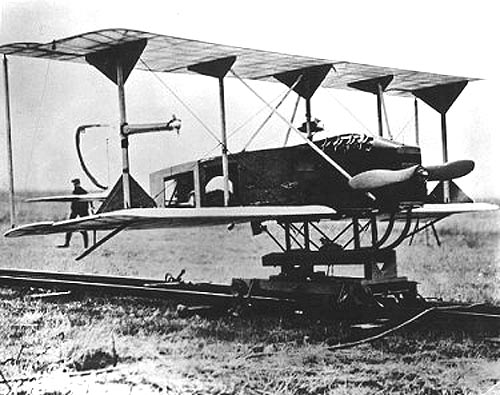Guidance is an issue. Acoustic? (Draw from, and/or feed into, ASW hydrophones?)
I see a number of problems with that. First off, air is substantially less conductive of sound than water is. I'm not sure there is much in the way of cross-feed to draw from the field of ASW. An
aerophone simply won't function anywhere near as well as a hydrophone and there's not a lot you can do about the medium's properties.
As I understand it, all acoustic aircraft locators of the era were static? They didn't need to deal with flow noise. A would-be WWI pulsejet AAM is going to be launched by a pursuing aircraft at say 90kts. So for a reasonable closing speed on the enemy aircraft, speed would have to be at least 200kts? At that speed, flow noise would be prodigious! A SSN that is sprinting is effectively deaf from flow noise and has to periodically drift to detect threats (I presume a SSN going active is as undesirable as popular culture makes it out to be

).
Also, the detectors that I can find pictures of are not exactly what I would call aerodynamic. I would also be concerned with the launch-aircraft's own noise. Wouldn't this "white-out" any acoustic sensor and necessitate a rather ambitious for the day lock-on after launch?
Wire-guidance on a tractor propeller aircraft is impractical for obvious reasons. The slightest manoeuvre and *snip*. I suppose it might be viable on a pusher, provided it has the performance to carry both missile and spool.
There is a picture of Casanova's pulsejet online and I have serious doubts of getting such a monster under anything other than a heavy bomber of the era in question. Certainly, this could be scaled to fit but before the armistice? Again, I have doubts. I think any notional missile would have to be a singleton carried on the aircraft centre-line. I'm not sure many aircraft of the era would have the structural strength to mount such weight significantly outboard or the control authority necessary for the inevitable asymmetric condition.
I note that this notional device is not intended to be as heavy as a V-1 but it is still going to be a considerable weight that will dictate a bomber to carry it. Fuel, "guidance", warhead, control surfaces and the pulsejet will all quite quickly add up and outstrip the payloads of most fighter aircraft of the day. You certainly won't see a Sopwith Camel zipping about with one! I think it is fair to say placing a lumbering bomber on a mission where it is purposely seeking out enemy fighters is operationally dubious!
The only way I see to prevent this is to go for some kind of simple, lightweight "flying stovepipe" design, forgoing guidance and warhead and relying on a hit to kill, in which case you could save a great deal of effort by using rockets, as mentioned upthread.
ETA: Some further thoughts on such early guidance. Wikipedia has Sperry developing a "straight-and-level" autopilot in 1912. When was the first multi-channel autopilot developed? Assuming acoustical detection were possible, how is the signal actually being processed with circa 1918 technology? I have this facetious image of pattern matching being accomplished by wax cylinder! If somehow tuned to hunt for a specific frequency, surely different engines produce peak signal at different frequencies? Since the target would be manoeuvring, how is Doppler being compensated for? This really seems to be beyond the state-of-the-art for WWI.
If it took the form of simply seeking out a loud noise somewhere forward - which I think is probably the very best you could hope for for Great War era technology, some form of droppable noise-maker would seem to be an absurdly easy countermeasure to arrive at.


